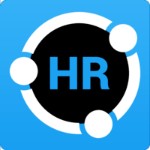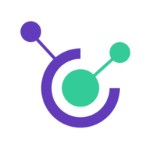The best HR software for law firms provides a digital solution for people management. These systems are critical to optimize task management and billing as well as recruiting, onboarding and training. HR software helps managers increase productivity and profitability.
What is the importance of HR software in law firms? Human resources software management can eliminate manual tracking, protecting sensitive employee data. Legal teams also benefit from automated workflows from recruiting to hiring to onboarding and beyond.
Learn more about the characteristics of HR software for everything from benefits management to optimizing billable hours.

Characteristics of HR software For Law Firms
The best HR software for law firms takes into consideration compliance with legal regulations and integration with time-tracking and billing systems. Additionally, you’ll need an HRIS that protects sensitive employee records and provides robust reporting capabilities.
Compliance With Legal Regulations
Ask these questions to determine if an HR system will incorporate vital functionality for everything from employee attendance to learning management systems:
- Does the HR software meet requirements for confidentiality regarding employee records?
- Does the software offer tools for core HR functions: performance tracking, benefits administration, legal compliance requirements, etc.
- Does the human resources software protect your firm against undocumented termination and other incidents that make life more difficult for HR professionals?
- Does the tool simplify tax compliance at the federal, state, and local levels?

Integration with time tracking and billing systems
Integrated HR information systems merge payroll and HR activities seamlessly. When you integrate your workforce management within a digital platform you can discontinue manual spreadsheets that introduce human error and disconnect your time tracking.
As well as integrating with the payroll system, you need an HR tool that plugs into your existing time tracking software. Tracking time spent on tasks and projects is essential for a law firm that lives and dies by billable hours.
The best human resources software for law firms automates the billing process by producing invoices that are ready to send out. This can shorten the billing life cycle and make it easier for clients to pay for services.
Robust data management and reporting capabilities
Data management leads to important insights that add value to your customers and improve your bottom line. With effective data management, people across an organization can find and access trusted data for their queries.
Effective data management allows you to analyze employee engagement at all levels of the firm. This can provide valuable insight and fatten your bottom line. Data management applies to all employees across your organization and the right HR system will give you access to important information without compromising confidentiality.
It’s also important to consider potential data loss and breaches that can lead to legal issues. Top HR systems have strong data security with built-in backup and retrieval processes. Additionally, HR tools should remove personally identifiable information from the reporting process to comply with privacy laws.
You also need a system that streamlines the reporting process on key metrics such as turnover, headcount, compensation, and similar information. In any law firm, there’s a constant filing of reports and resource assignment to ongoing cases. Managing all of these aspects can become quite complex. Fortunately, HR software can track billable and nonbillable hours from the first consultation until a verdict is obtained.
Best of all, your staff will no longer have to file separate reports. There will be one source of truth with tiered access to HR information on a case level basis.
Top HR software options for law firms
What software do most law firms use? Choose from the top HRIS systems for performance management and visibility. The systems showcased in this section provide reliable data management, making it simple for your HR professionals to find the right information. Ultimately, that facilitates every role in your law firm.

Paychex Flex
Paychex Flex handles all critical HR data, including employee scheduling, attendance, billable status and much more. If you’re looking for robust benefits tracking, Paychex Flex can help. It’s an all-in-one tool with experienced, U.S.-based support staff and you can choose the appropriate human resources software filter for the task at hand.

Gusto
Gusto is a leading human resources (HR) platform that assists law firms with payroll, employee benefits, hiring, onboarding, time and attendance, and compliance issues. It’s simple to use and provides a wide range of human resources functionality. It can help your law firm track employee benefits, onboarding, training, and compliance. Choose Gusto when you’re looking for a simple interface with a focus on the user experience.

Workday
Workday human resource management software certainly tracks and manages your workforce well. However, it also offers insights into your firm’s skills and capabilities. This deeper level of analysis can help you make the right staffing decisions, nurture growth, and implement succession plans when needed.

SAP SuccessFactors
SAP SuccessFactors is a cloud based human resources software platform that focuses on core support, including talent management, payroll, analytics, and planning. There are a number of modules available within this broad HR solution. You can take advantage of the recruiting and onboarding platform to find and win new talent and facilitate your payroll functions in a secure environment.

Ceridian Dayforce
Dayforce is a single solution for workforce management, benefits, payroll, talent management, and documentation. It allows your law firm to track and access real-time data to facilitate invoicing and billing as well as employee performance management.

Key features to consider when selecting HR software for law firms
After ensuring that the system provides core HR functions, consider user-friendliness, mobile compatibility, and performance evaluation support. Does the system offer an employee portal for enhanced usability? Does it have reliable automated processes for payroll and benefits tracking? These are just some of the questions to ask in your evaluation.
User-friendly interface
Good software considers how easy it is for employees to work with it. That’s why it’s important to choose HR software that won’t bog down your administrative staff or legal team. Making the right decision up front can significantly increase your firm’s overall productivity and prevents time lost on troubleshooting system issues.
Mobile compatibility
What is the use of mobile applications in HR functions? Your HR team can access your system through tablets, smartphones, and other devices when traveling or out of the office. This is essential for busy law firm employees who often work long hours.
Performance evaluation tools
You want to talk to vendors that offer insight into performance evaluations. Regardless of what approach your law firm takes to performance management, consider the following when choosing the best HR software for you:
- Customized forms to capture data regarding employees and managers
- Customized workflows that align with your business processes
- Autofill forms to save time and provide continuity during the review process
- Dashboards for progress checks and goal attainment tracking
- Integration with succession and compensation systems
Employee self-service portal
One of the main attractions of using HR software is the ability to share information digitally without creating security risks. An employee self-service portal allows your staff to update their personal information without accessing other employee records. This helps your managers quickly view and update information for their direct reports. Role-based permissions control who has eyes on sensitive data about your company and employees.
If you want to streamline the approval process, adopting the right HRIS can help.
Automated payroll and benefits administration
If you have independent HR and payroll systems, you may be performing dual entries. By integrating HR and payroll into the same system, you can save significant time and eliminate inconsistencies. Many HR systems offer sophisticated integration between these two functions. Here are a few features to watch out for:
- Seamless integration between HR and payroll modules to avoid rekeying information
- Customizable payroll codes that meet your current and future requirements
- Online access to pay stubs and tax information
- Time and attendance modules that connect to related benefits, such as PTO
- Data validation to help prevent data entry errors
- Payroll comparison to quickly identify discrepancies
You’ll also want a system that makes it easy to capture employee benefits information during the open enrollment and onboarding processes. When it comes to benefits, you’ll need a system that can configure multiple plan options and allow you to update insurance providers if you switch benefits packages. Ideally, your HR system will also push data to the payroll module without requiring anyone to re-enter the information.

Cost considerations for HR software for law firms
You’ll want to compare the upfront costs, ongoing maintenance and fees, and return on investment before making a final decision.
Upfront costs
Your upfront costs will include integrating your existing data into the new system, implementing the new data, and testing the system for accuracy and performance.
Ongoing costs and fees
There are different pricing models, and you can determine which one you’re most comfortable with as part of your evaluation process.
In some cases, you’ll pay a flat monthly fee per user. This applies to every member of your organization who will log into the HR system. Typically, the cost per user will go down as the number of users increases. Many law firms switching to an HR software system for the first time choose this pricing model because it will allow them to easily onboard new staff members.
In other cases, you may pay a subscription. The subscription may last for a month or a year, depending on the contract you negotiate with the vendor. Often, you’ll save money by choosing a single annual payment.
Some HR platforms charge a one-time payment for on-premises software licensing. You might choose this pricing model if you have tried the free version and want to invest in advanced features. If you have over 100 employees, the one-time fee might save you money on licensing. Discuss all available options with each vendor on your short list to help you determine which would work best for your firm.
Return on investment
You might wonder how to calculate the return on investment for your HR software. The formula for ROI divides net gain by the total cost of the system. Therefore, you need two pieces of information. First, how much will the HR software cost and, second, how much money will it save you over time.
It’s relatively easy to figure out the cost of the system. You’ll want to include subscription fees, customer support and set up costs as well as ongoing expenses to maintain the system. Include labor expense for training and data integration.
According to a 2022 Software Path survey, you’ll want to plan for around $200 per month per user.

Conclusion
Now that you have learned more about the top HR software vendors and considerations necessary in choosing the best human resources software, it’s time to make a final decision. Don’t forget to include all costs and benefits in the ROI calculation.
It’s essential to choose a system that is readily available whether employees want to work at home or in the office. At the same time, you’ll need a platform that makes it easy to integrate data from HR and payroll with recruiting, onboarding, training, and other employee related functions. For best results, choose a partner with first-class customer support and affordable maintenance and licensing plans.
HR and payroll activities are so intertwined that it doesn’t make sense to manage them separately. Instead, integrate workforce management that makes life easier for your HR professionals and avoid duplicate entry errors. Most importantly, choose a tool that empowers your staff to become more productive without becoming a time well of multiple data entry points.
Find hundreds of HR Management Software Tools listed in our Software Marketplace















